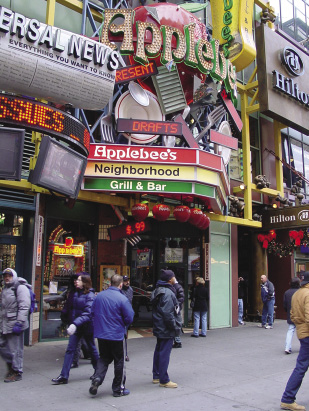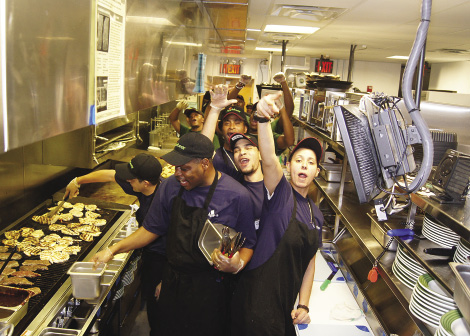- Home
- Media Kit
- Current Issue
- Past Issues
- Ad Specs-Submission
- Ad Print Settings
- Reprints (PDF)
- Photo Specifications (PDF)
- Contact Us

![]()
ONLINE

An Entrepreneurial Spirit
Editors’ Note
Zane Tankel is a graduate of the University of Pennsylvania’s Wharton School and once owned and operated a graphic arts company with five plants in the United States. He sold three of the plants to Potomac Graphic Industries and continued to operate plants in Detroit, Michigan, and Cambridge, Massachusetts until the mid-90s. He has also been involved as an investor/operator in businesses engaged in public relations, security, consulting, real estate, a radio station, and restaurants. He was the owner/operator of Cameos, a fine dining restaurant in Manhattan. He also was a partner with Regis Philbin, Jackie Mason, and Mikhail Baryshnikov in Columbus restaurants in Manhattan. Tankel was a founding director and member of the Executive Committee for Bridging the Rift as well as a founding member and current board member of the Federal Law Enforcement Foundation.
Company Brief
Apple-Metro, Inc. (www.applemetrorestaurants.com) is the New York Metropolitan area franchisee for Applebee’s Neighborhood Grill & Bar®. Their portfolio currently includes 35 Applebee’s® in the five boroughs, Westchester, and Rockland Counties. Apple-Metro, Inc. was formed in 1993 when owners Zane Tankel and Roy Raeburn joined forces. In their 19th year of operation, Apple-Metro’s mission continues to be creating the ultimate casual dining experience through extraordinary service and exceptional food and drink in a fun-filled, friendly atmosphere. This outstanding franchisee has recently received acclaim by being honored with the 2012 Frederick Douglass Medallion award from the New York Urban League as well as being named to the“Best Places to Work” list, by The Griffin Report of Food Marketing.
How did Apple-Metro come about? Could you have imagined the success of the company early on?
I saw there was a space for marrying a franchisee with an entrepreneurial spirit. With the first restaurant, we knew little about the franchisee business, but we knew as much as others did and maybe a bit more.
The first site we picked went before a real estate committee and was rejected. At the time, Applebee’s consisted of maybe 200 restaurants across the country. I called the Chairman of the Board about a potential Applebee’s location and said it was at the rear end of a mall in Staten Island, and it was rejected because they felt it should be at the front end of the mall.
I spoke with Abe Gustin, Applebee’s founder, and I said, I understand the real estate committee’s position, but we know New York and you are all in Kansas; also, it’s our money, not yours, so if we’re willing to risk it, why do your people say no?
He said, you have a point, but we’re trying to build a brand. I said if you thought we’d trash your brand, you should have never permitted us to be a franchisee.
To his credit, he overrode the real estate committee and we got it, and in the first year, we did 50 percent more business than any Applebee’s in the U.S. So it was clear we knew what we were doing.

Applebee’s Times Square
Why has the performance been so consistently strong?
The respect of our people. Our customers are our own people – the people that spend their money in our restaurants are our guests.
What distinguishes us from other companies is that our people come from the roughest neighborhoods around the New York City area.
When we open a restaurant in these areas, it’s not unusual for a server to not understand how to correctly and professionally interact with customers. So we start with raw talent and refine their people skills with vigorous training. They learn better than if they had walked in with that experience.
Is there a consistent feel across restaurant locations?
For the most part, but there are nuances that vary by neighborhood. For example, we serve jerk chicken or ribs where that is preferable. In Mount Kisco in Westchester, there is a different customer or guest for us than in Bed Stuy in Brooklyn. The core of the menu is the same but the people are different because we hire from the community.
Are you developing healthy offerings?
I’ve always been health conscious and part of my gratification is helping our people grow. If I can educate our people in terms of health, they have an ability to educate our guests about health, and that is a trend that is gaining traction. Our restaurants also offer the “Unbelievably Great Tasting and Under 550 Calories” menu, along with the company’s Weight Watchers selections, which demonstrate Applebee’s ongoing commitment to providing guests a variety of great-tasting choices when dining out. The new menu line-up took over a year to develop as Applebee’s executives worked with professional nutritionists to carefully develop lower-calorie recipes that are just as satisfying to the palate as the rest of Applebee’s menu.

Employees work the kitchen of
an Apple-Metro restaurant
How tough is it to differentiate in this space and gain loyalty from clients?
It’s challenging, but competition is good because it keeps us sharp. We grew from 2007 to 2009 – we built a dozen restaurants during that time when people were shutting down restaurants. There will always be a need for the best and it’s not what we do but how we do it. We uphold certain standards – we have a 14-minute cook time so that food will be on the table in that time; when you sit down, we need to greet you in 60 seconds. If we hold to those standards, no one can compete.
Is green building a focus for you?
That started three or four years ago when we were building restaurants with things like waterless urinals, and we incorporated LED lighting into all of our restaurants.
Very much like health, green energy is a trend – it’s not going away.
What do you look for in hiring employees?
I look for something good in someone and build on that piece. However, one’s morality, integrity, and honesty are critically important; there is no negotiation on that.
What are your plans for the future?
We just signed a lease for a new freestanding restaurant in Coney Island across the street from Nathan’s.
At the end of 2007, we had about $70 million on our line of credit so we developed a steering committee strategy to expand – from 2008 to 2009, we built 10 restaurants in great locations with all of our money.
We also recently opened the first Gold LEED-certified green restaurant in the New York Metropolitan area – it’s one of 11 buildings in the country. We gather rainwater and use it for all greywater in the restaurant; the whole restaurant, including the foundation, uses recycled materials; we compost all of our own garbage; we have all LED lighting; we have a full living wall and we had to put piping through the back of it to fertilize and water it – it cost us $4 million-plus to build, but we have that obligation. Being a leader is sometimes more costly than not but it’s a statement of who we are.•